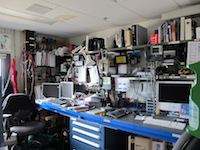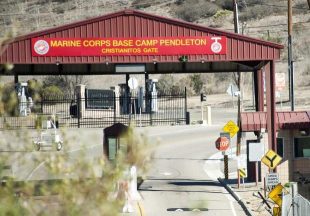I’ve often quoted Tom Davenport’s observation that the default HR strategy for knowledge-intensive organizations is to “hire smart people and leave them alone.†While there’s wisdom in that perspective, I fear it is no longer a desirable strategy.
I once had the office next door to Tom’s when we both worked at the Center for Information Technology and Strategy in Boston. The Center was an experiment by Ernst & Young to build better connections between academic research and business practice. It was an embodiment of Tom’s observation, grounded in our experiences in organizations that had pursued other approaches.
What does it mean to “leave them alone?†People don’t become managers to leave things alone. Managers set direction, they marshall resources, they evaluate and interpret results. Why should smart people be exempt from these eminently sensible actions?
They’re not.
But managers of smart people often aren’t qualified to do these essential management tasks. Setting direction, marshaling resources, and evaluating results depend on understanding practice. This is where managers struggle. In a world of manual tasks and procedural paperwork, managers could be expected to have a good grasp of how the work was and should be done. Managers understood practice. Thus, they were qualified to manage it.
We no longer live in that world.
In a world of knowledge work, it is knowledge workers—the smart people—who best understand practice. In this world, Tom’s strategy is a safe and responsible one; if you don’t know how to do what you manage, you’re well advised to resist the urge to meddle.
“First, do no harm†is commendable but not the same advice as “do nothing.†Setting direction, marshaling resources, and evaluating results depend on understanding practice. But understanding practice tells us nothing about whether that practice is advancing the goals of the organization. Practice is anchored in where we are; we also need to know where we would like to go.
Blending these perspectives implies that managing smart people requires a collaborative effort. Smart people provide sense-making of where we have been. Managers provide insights on desirable places to go. Smart people and managers jointly develop the maps and plans that connect the two.
It is not yet clear to me how this collaboration should play out in practice.
Smart people must be able to articulate what they do for those who can’t be expected to know as much as the smart people do about their domains. This places a responsibility on smart people to be able to educate others—particularly managers—about the point and promise of their expertise. Smart people who can’t, or won’t, explain how their expertise matters do a disservice to their organizations.
When smart people were a rare phenomenon in organizations, smart people and pretenders could both get away with jargon and faux-complexity. The numbers were small enough that a few wise gatekeepers could contain the downside risk and the upside of actual smart ideas was worth the trouble.
There’s an old, likely apocryphal, story told of Tom Watson in the early days of IBM. Seems an engineer had made a 10 million dollar design mistake. When asked why the engineer hadn’t been fired, Watson’s response was “I spent too much money learning from that mistake to get rid of the one person who won’t make it again.â€
The calculus changes when smart people represent a significant proportion of your work force. For one, tolerating a single 10 million dollar mistake is reasonable; managing a hundred simultaneous potential mistakes—and upsides—becomes an existential problem. There is too much chance to leave the process to chance.
The organization needs a view into the mix of potential smart ideas. Further, the organization needs to actively shape the mix to align with the goals of the organization. This becomes a conversation about “command intent†and how that interacts with “ground truth.â€
Leaving smart people alone makes sense when the alternative is to give orders that are ignorant of context and possibility. Far better to combine the perspectives of smart people and forward-looking managers and increase the smarts applied.
 Vendors and too many managers continue to promote and search for the One True Tool. This is a clear indicator that someone is trapped in an industrial mindset irrelevant to the actual world of knowledge work that we inhabit. If your work can be accomplished with one tool, then you are little different from or better off than the average wrench-turner on an assembly line. You are a replaceable component in a rigid system.
Vendors and too many managers continue to promote and search for the One True Tool. This is a clear indicator that someone is trapped in an industrial mindset irrelevant to the actual world of knowledge work that we inhabit. If your work can be accomplished with one tool, then you are little different from or better off than the average wrench-turner on an assembly line. You are a replaceable component in a rigid system. I spent a year writing case studies before I began my doctoral program. More accurately, I was required to spend a year as a case writer to demonstrate my qualifications and commitment to the program before the admissions committee would accept me. My academic transcripts showed a bit more variance than the committee was accustomed to seeing and this was the compromise between the advisor who believed in me and the committee.
I spent a year writing case studies before I began my doctoral program. More accurately, I was required to spend a year as a case writer to demonstrate my qualifications and commitment to the program before the admissions committee would accept me. My academic transcripts showed a bit more variance than the committee was accustomed to seeing and this was the compromise between the advisor who believed in me and the committee.
 Had lunch with my friend Buzz Bruggeman, CEO of
Had lunch with my friend Buzz Bruggeman, CEO of  When people ask me why I did something so strange as to leave a perfectly good career and get a Ph.D., the story I tell is this.
When people ask me why I did something so strange as to leave a perfectly good career and get a Ph.D., the story I tell is this. The
The  A common formulation in analytics circles is data yields insights which provoke action. Stripped to the core, this is the marketing pitch for every vendor of analytics or information management tools. This pitch works because people drawn to management prefer the action end of that cycle and are inclined to do no more analysis than necessary to justify an action. “Don’t just stand there, do something!†is a quintessential managerial command (and the exclamation point is required).
A common formulation in analytics circles is data yields insights which provoke action. Stripped to the core, this is the marketing pitch for every vendor of analytics or information management tools. This pitch works because people drawn to management prefer the action end of that cycle and are inclined to do no more analysis than necessary to justify an action. “Don’t just stand there, do something!†is a quintessential managerial command (and the exclamation point is required). We are imitative creatures. We are happier copying someone else’s approach than inventing solutions based on the actual problem at hand. How often do you encounter situations where change is called for and the first response to any suggestion is “where has this been done before?†For all the talk of innovation, I often wonder how anything new ever happens.
We are imitative creatures. We are happier copying someone else’s approach than inventing solutions based on the actual problem at hand. How often do you encounter situations where change is called for and the first response to any suggestion is “where has this been done before?†For all the talk of innovation, I often wonder how anything new ever happens.
